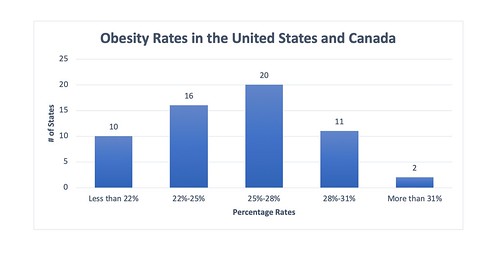His practice is justified or not. Randomized controlled trials testing the
His practice is justified or not. Randomized controlled trials testing the effectiveness of involuntary hospital admissions as compared to noncoercive forms of treatment may be desirable, but remain quite difficult to conduct for numerous ethical and sensible causes. Thus, ideal proof is obtained based on observational research, following up cohorts of patients exposed to involuntary remedy. Current observational studies have suggested only limited improvements of general symptoms and minimal, if any, social  gains following involuntary admission [4,7]. It has been argued, nonetheless, that the primary aim of involuntary hospital remedy of patients is just not the improvement of basic symptoms or with the social predicament, however the reduction of risk [3,6]. To date, no substantial scale research have already been SPQ web published showing to what extent the threat for suicide and aggression genuinely decreases just after involuntary hospital treatment. We analyzed information in the two biggest observational research on outcomes of involuntary hospital treatment obtainable to date, focusing on psychopathological indicators of danger, i.e. suicidality and hostility. The studies utilised an identical methodology for assessing both baseline characteristics and outcomes of patients. While various findings of these studies happen to be published, so far no certain analysis of threat indicators has been conducted [2,five,7]. Suicidality and hostility had been assessed by researchers who were not involved in therapy. The positive aspects of these measures are that they are independent of treating clinicians, who might have biased views around the patients’ actual risk indicators; might be assessed consistently across different nations and settings; and reflect clinical symptoms that may very well be targeted in remedy. The two studies have very comparable designs [2,5], which enabled us to conduct a pooled analysis and test associations of patient qualities with suicidality and hostility outcomes. We regarded as sociodemographic and clinical traits of individuals which have been identified to be linked with danger inside the literature (age, gender, employment, living predicament, previous hospitalizations, diagnosis and worldwide functioning). The particular analysis questions have been: How lots of individuals show moderate or higher levels of suicidality and hostility when involuntarily admitted, and how lots of sufferers have such levels a single month and 3 months later How many patients show such levels regularly, i.e. when involuntarily admitted, soon after one particular month and immediately after 3 months What patient qualities predict PubMed ID:https://www.ncbi.nlm.nih.gov/pubmed/19119969 suicidality and hostility three months right after involuntary hospital admissionMaterials and Approaches Design and choice of participantsWe carried out a “pooled analysis”, i.e. individual patient information inside the research had been pooled in a larger dataset and analysed. This approach enabled a precise estimate of effects of influential and confounding things, and requires into account the heterogeneity of nations [8]. Data from two observational potential research [2,5] have been incorporated within the evaluation.PLOS 1 DOI:0.37journal.pone.054458 Might two,2 Changes of Psychopathological Threat Indicators following Involuntary Hospital TreatmentThe first study was the “European Evaluation of Coercion in Psychiatry and Harmonisation of Finest Clinical Practice (EUNOMIA)”. It assessed the outcomes of involuntarily admitted patients in European nations (Germany, Bulgaria, Czech Republic, Greece, Italy, Lithuania, Poland, Slovak Republic, Spain, Sw.
gains following involuntary admission [4,7]. It has been argued, nonetheless, that the primary aim of involuntary hospital remedy of patients is just not the improvement of basic symptoms or with the social predicament, however the reduction of risk [3,6]. To date, no substantial scale research have already been SPQ web published showing to what extent the threat for suicide and aggression genuinely decreases just after involuntary hospital treatment. We analyzed information in the two biggest observational research on outcomes of involuntary hospital treatment obtainable to date, focusing on psychopathological indicators of danger, i.e. suicidality and hostility. The studies utilised an identical methodology for assessing both baseline characteristics and outcomes of patients. While various findings of these studies happen to be published, so far no certain analysis of threat indicators has been conducted [2,five,7]. Suicidality and hostility had been assessed by researchers who were not involved in therapy. The positive aspects of these measures are that they are independent of treating clinicians, who might have biased views around the patients’ actual risk indicators; might be assessed consistently across different nations and settings; and reflect clinical symptoms that may very well be targeted in remedy. The two studies have very comparable designs [2,5], which enabled us to conduct a pooled analysis and test associations of patient qualities with suicidality and hostility outcomes. We regarded as sociodemographic and clinical traits of individuals which have been identified to be linked with danger inside the literature (age, gender, employment, living predicament, previous hospitalizations, diagnosis and worldwide functioning). The particular analysis questions have been: How lots of individuals show moderate or higher levels of suicidality and hostility when involuntarily admitted, and how lots of sufferers have such levels a single month and 3 months later How many patients show such levels regularly, i.e. when involuntarily admitted, soon after one particular month and immediately after 3 months What patient qualities predict PubMed ID:https://www.ncbi.nlm.nih.gov/pubmed/19119969 suicidality and hostility three months right after involuntary hospital admissionMaterials and Approaches Design and choice of participantsWe carried out a “pooled analysis”, i.e. individual patient information inside the research had been pooled in a larger dataset and analysed. This approach enabled a precise estimate of effects of influential and confounding things, and requires into account the heterogeneity of nations [8]. Data from two observational potential research [2,5] have been incorporated within the evaluation.PLOS 1 DOI:0.37journal.pone.054458 Might two,2 Changes of Psychopathological Threat Indicators following Involuntary Hospital TreatmentThe first study was the “European Evaluation of Coercion in Psychiatry and Harmonisation of Finest Clinical Practice (EUNOMIA)”. It assessed the outcomes of involuntarily admitted patients in European nations (Germany, Bulgaria, Czech Republic, Greece, Italy, Lithuania, Poland, Slovak Republic, Spain, Sw.
